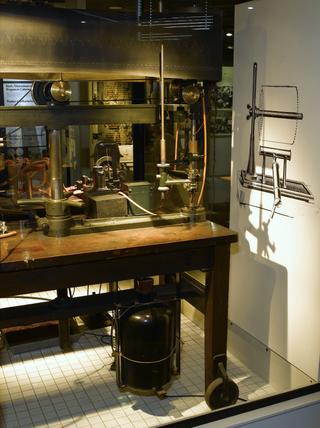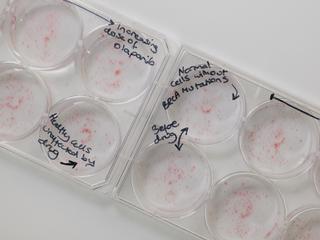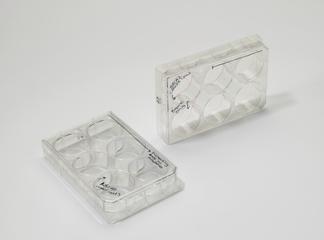
Colorimeter with three disc comparators, Wiltshire, England, 1951-1960
- maker:
- Tintometer Limited




Lovibond comparator with 3 alternative discs, bakelite case, by The Tintometer Ltd., Milford, Wiltshire, England, 1950-1960
Blood components such as haemoglobin are estimated using a colorimeter. The instrument consists of a box called a comparator. Inserted into it is a disc containing semi-transparent coloured windows. Blood chemically altered to colour different constituents, such as haemoglobin, is compared with the colour on the comparator. Therefore the concentration of the constituents is measured. This colorimeter was made by Tintometer Limited. It comes with three separate discs to measure carboxyhaemoglobin and haemoglobin A. Haemoglobin is the part of the blood responsible for carrying oxygen around the body. Carboxyhaemoglobin is carbon monoxide bonded to haemoglobin. This means that haemoglobin cannot transport oxygen around the body to vital organs.
Details
- Category:
- Laboratory Medicine
- Object Number:
- 1982-396
- Materials:
- comparator, bakelite
- Measurements:
-
overall - previous: 95 mm x 105 mm x 37 mm, .446 kg
overall - case: 110 mm x 100 mm x 40 mm, .246 kg
overall - disc: 19 mm x 90 mm x 93 mm, .068 kg
- type:
- colorimeter




